Conflict Zones
India-Pakistan tensions: A brief history of conflict | India-Pakistan Tensions News
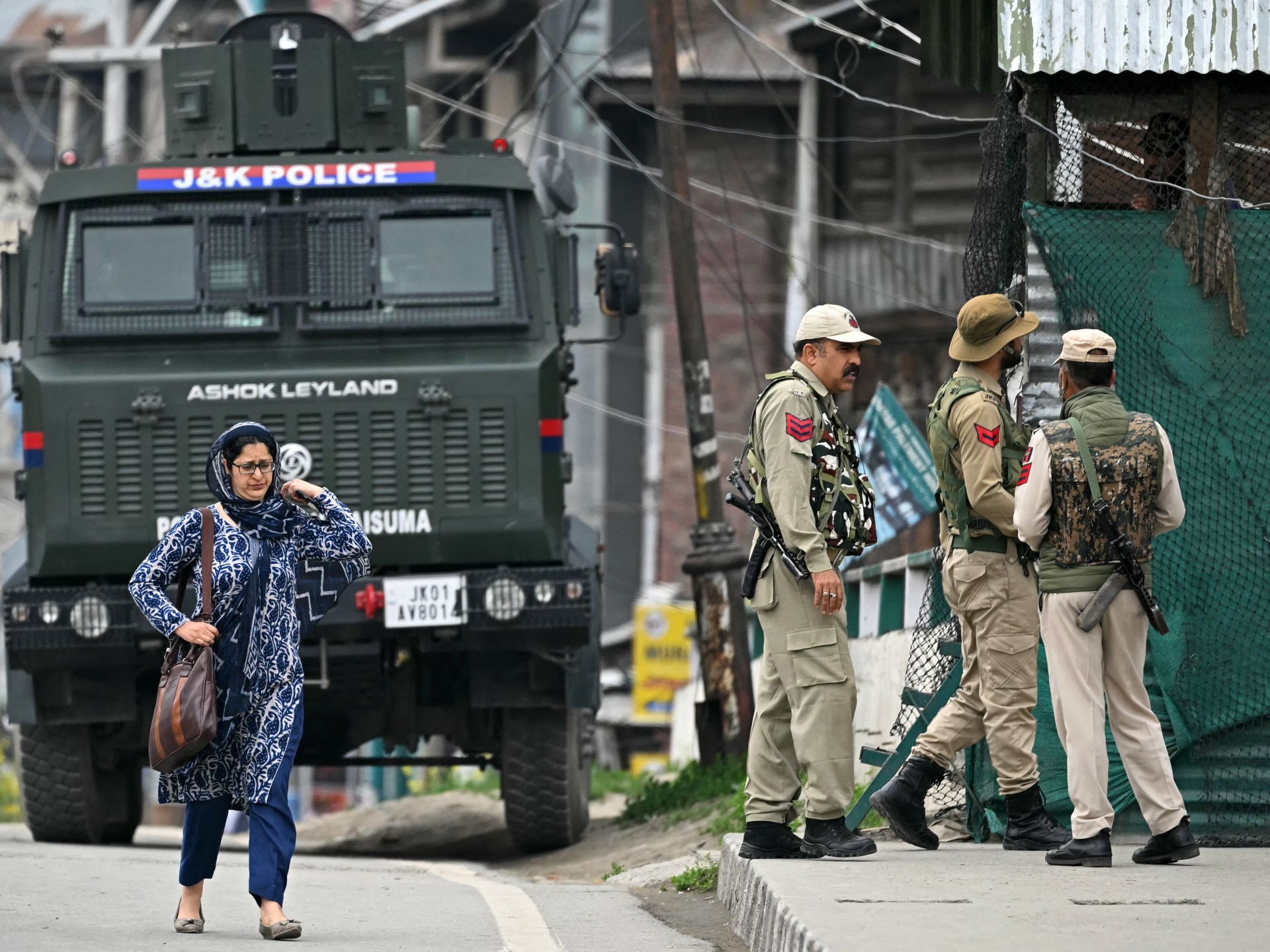
India and Pakistan are locked in a rapidly escalating military exchange that threatens to explode into a fully fledged war, triggered by a deadly attack on tourists in Indian-administered Kashmir on April 22 in which 26 civilians were killed, but rooted in decades-old hostilities.
On May 7, India launched a wave of missiles into Pakistan and Pakistan-administered Kashmir, striking at least six cities and killing at least 31 people – including two children – according to Islamabad. Since then, Indian drones have hit major Pakistani cities and military installations, and India has accused Pakistan to launching a barrage of missiles and drones at its cities and military facilities.
Alongside the missiles and drones, the nuclear-armed neighbours have also traded allegations and denials. India says its May 7 missiles only struck “terrorist infrastructure” while Pakistan insists civilians were killed. Pakistan denies that it launched missiles or drones towards India, and both claim to be victims of the other’s aggression.
Yet the origins of this latest crisis between India and Pakistan go back to their very formation as sovereign nation states in their current form. Here is a recap of the state of near-constant tensions between the South Asian neighbours.
1940s-50s: A tale of two countries
The Indian subcontinent was a British colony from 1858 until 1947, when British colonial rule finally ended, splitting the subcontinent into the two countries. The Muslim-majority Pakistan gained its independence on August 14 that year as non-contiguous and culturally distant zones, West Pakistan and East Pakistan. The Hindu-majority but secular India gained its independence on August 15, 1947.
The partition was far from smooth, causing one of the largest and bloodiest human migrations ever seen, displacing about 15 million people. The process also sparked horrific communal violence and riots between Muslims, Hindus and Sikhs across the region, in which between 200,000 and two million people died. Border disputes and separatist movements sprang up in the aftermath.
What stuck out as a major sticking point between the neighbours was the question of where the Muslim-majority Himalayan region, Kashmir, would go. The monarch of Kashmir initially sought independence and the area remained disputed.
In October 1947, the first war over Kashmir broke out when armed Pakistani tribesmen invaded the territory. The monarch of Kashmir asked India for its assistance in driving out the tribesmen. In return, the monarch accepted India’s condition for help – that Kashmir join India.
Fighting continued until 1948, when it ended with Kashmir divided. Pakistan administers the western part of Kashmir, while India administers much of the rest, with China holding two thin slices of Kashmir’s north. India claims all of Kashmir, while Pakistan also claims the part that India holds but not what China, its ally, holds.
1960s: Failed Kashmir talks and the second war
The decade started with a promise of better ties. In 1960, India and Pakistan signed the Indus Waters Treaty, a World Bank-mediated deal under which they agreed to share the waters of the six Indus Basin rivers they both relied – and still rely – on.
The treaty gives India access to the waters of the three eastern rivers: the Ravi, Beas and Sutlej. Pakistan, in turn, gets the waters of the three western rivers: the Indus, Jhelum and Chenab. After the April 22 Pahalgam attack, India has suspended its participation in the treaty but until recently, the deal stood as a shining example, internationally, of a water-sharing pact that survived multiple wars.
One of those wars would take place in the 1960s.
In 1963, the then-foreign minister of India, Swaran Singh and his Pakistani counterpart, Zulfiqar Ali Bhutto, held talks over the disputed territory of Kashmir. These talks were mediated by the United States and the United Kingdom.
While exact details of the discussions were not made public, no agreement was reached. In 1964, Pakistan referred the Kashmir case to the United Nations.
In 1965, the two countries fought the second war over Kashmir after between 26,000 and 33,000 Pakistani soldiers dressed as Kashmiri residents crossed the ceasefire line into Indian-administered Kashmir.
As the war escalated, Indian soldiers crossed the international border into Pakistan’s Lahore. The war ended inconclusively, with a ceasefire. In 1966, Indian Prime Minister Lal Bahadur Shastri and Pakistani President Mohammad Ayub Khan signed an agreement in Tashkent, mediated by the Soviet Union, restoring diplomatic and economic relations.
1970s: Bangladesh and the first step towards a nuclear race
In 1971, East Pakistan and West Pakistan went to war after then-president Zulfikar Ali Bhutto refused to let Sheikh Mujibur Rahman, the leader of the East Pakistan-based Awami League, assume the premiership. This was despite the fact that the Awami League won the majority of seats in Pakistan’s 1970 parliamentary elections.
In March, the Pakistani military began a crackdown in East Pakistan’s Dhaka and in December, the Indian army got involved. The Pakistani army eventually surrendered. East Pakistan became the independent country of Bangladesh.
In 1972, Bhutto and Indian PM Indira Gandhi signed an agreement in the Indian town of Simla, called the Simla Agreement where they agreed to settle any disputes by peaceful means.
The agreement established the Line of Control (LoC) between the two countries, which neither side is to seek to alter unilaterally, and which “shall be respected by both sides without prejudice to the recognised position of either side”.
In 1974, Kashmir’s state government affirmed that it “is a constituent unit of the Union of India,” an accord rejected by Pakistan.
In the same year, India detonated a nuclear device in an operation codenamed “Smiling Buddha”. India deemed the device a “peaceful nuclear explosive”.
1980s: The rebellion in Kashmir
By the early 1980s, Kashmir was back at the centre of India-Pakistan tensions. A separatist movement took root, as popular sentiment started turning against the elected government of Indian-administered Kashmir, which many locals felt was betraying their interests in exchange for close ties with New Delhi.
A tipping point was the 1987 election to the state legislature, which saw the National Conference, a party committed to the Indian Constitution, win amid widespread allegations of heavy rigging to keep out popular, anti-India politicians.
By 1989, a full-blown armed resistance against India had taken shape in Indian-administered Kashmir, seeking secession from India.
New Delhi has consistently accused Islamabad of financing, training and sheltering these armed groups, who India describes as “terrorists”. Pakistan has insisted that it only offers “moral and diplomatic” support to the separatist movement, though many of those groups have bases and headquarters in Pakistan.
1990s: More agreements, nuclear tests and the Kargil conflict
In 1991, both countries signed agreements on providing advance notification of military exercises, manoeuvres and troop movements, as well as on preventing airspace violations and establishing overflight rules.
In 1992, they signed a joint declaration banning the use of chemical weapons.
In 1996, after a series of clashes, military officers from the countries met at the LoC in order to ease tensions.
In 1998, India detonated five nuclear devices. Pakistan responded by detonating six nuclear devices of its own. Both were slapped with sanctions by many nations – but they had become nuclear-armed states.
In the same year, both countries tested long-range missiles.
In 1999, Indian PM Atal Bihari Vajpayee met with Pakistani PM Nawaz Sharif in Lahore. The two signed an agreement called the Lahore Declaration, reaffirming their commitment to the Simla Accord, and agreeing to undertake a number of “confidence building measures” (CBMs).
However, later in the same year, the Pakistani military crossed the LoC, seizing Indian military posts in the Kargil mountains, sparking the Kargil War. Indian troops pushed the Pakistani soldiers back after bloody battles in the snowy heights of the Ladakh region.
2000s: Tensions and the Mumbai attacks
Tensions across the LoC remained high throughout the 2000s.
In December 2001, an armed attack on the Indian parliament in New Delhi killed 14 people. India blamed Pakistan-backed armed groups for the attacks, that led to a face-to-face standoff between Indian and Pakistan militaries along the LoC. That standoff only ended in October 2002, after international mediation.
In 2002, Pakistani President Pervez Musharraf, amid Western pressure following the 9/11 attacks, pledged that Pakistan would combat extremism on its own soil, but affirmed that the country had a right to Kashmir.
In 2003, during a UN General Assembly meeting, Musharraf called for a ceasefire along the LoC, and India and Pakistan came to an agreement to cool tensions and cease hostilities. In 2004, Musharraf held talks with Indian PM Vajpayee.
But in 2007, the Samjhauta Express, the train service linking India and Pakistan, was bombed near Panipat, north of New Delhi. Sixty-eight people were killed, and dozens injured. Hindu extremists were charged by the Indian government at the time, but have subsequently been set free.
In 2008, trade relations began to improve across the LoC and India joined a framework agreement between Turkmenistan, Afghanistan and Pakistan on a $7.6bn gas pipeline project.
However, in November 2008, armed gunmen opened fire on civilians at several sites in Mumbai, India. More than 160 people were killed in the attacks.
Ajmal Kasab, the only attacker captured alive, said the attackers were members of Lashkar-e-Taiba. Kasab was executed by India in 2012. India blamed Pakistani intelligence agencies for the attacks.
In 2009, the Pakistani government conceded that the Mumbai attacks may have been partly planned on Pakistani soil, but denied that the plotters were sanctioned or aided by Pakistan’s intelligence agencies.
2010s: ‘Jugular vein’ and Pulwama
In 2014, Pakistan’s then army chief General Raheel Sharif called Kashmir the “jugular vein” of Pakistan, and that the dispute should be resolved in accordance with the wishes and aspirations of Kashmiris and in line with UN resolutions.
In 2016, armed fighters killed 17 Indian soldiers in Uri, Indian-administered Kashmir. As a response, India carried out what it described as “surgical strikes” against bases of armed groups across the LoC.
In 2019, a suicide bomber killed 40 Indian paramilitary soldiers in Pulwama in Indian-administered Kashmir. Jaish-e-Muhammad claimed the attack.
In the aftermath, the Indian Air Force launched an aerial raid on Balakot in Khyber-Pakhtunkhwa province, claiming it targeted terrorist hideouts and killed several dozen fighters. Pakistan insisted that Indian jets only hit a forested region and did not kill any fighters.
Later in 2019, India revoked Article 370, which granted Kashmir a special, semi-autonomous status and began a crackdown that saw thousands of Kashmiri civilians and politicians arrested, many under anti-terror laws that rights groups have described as draconian.
2020s: Pahalgam and the drones
On April 22 this year, an armed attack on tourists in Pahalgam, in Indian-administered Kashmir, killed 26 men.
An armed group called The Resistance Front (TRF), which demands independence for Kashmir, claimed responsibility for the attack. India alleged that TRF was an offshoot of the Pakistan-based LeT. Islamabad denied allegations of its involvement in the attack and called for a neutral investigation.
On May 7, India launched Operation Sindoor, carrying out missile strikes on multiple targets in Pakistan and Pakistan-administered Kashmir. Pakistani authorities have claimed that at least 31 people were killed in six targeted cities.
Conflict Zones
Israel intercepts missile launched by Yemen’s Houthis | Houthis News
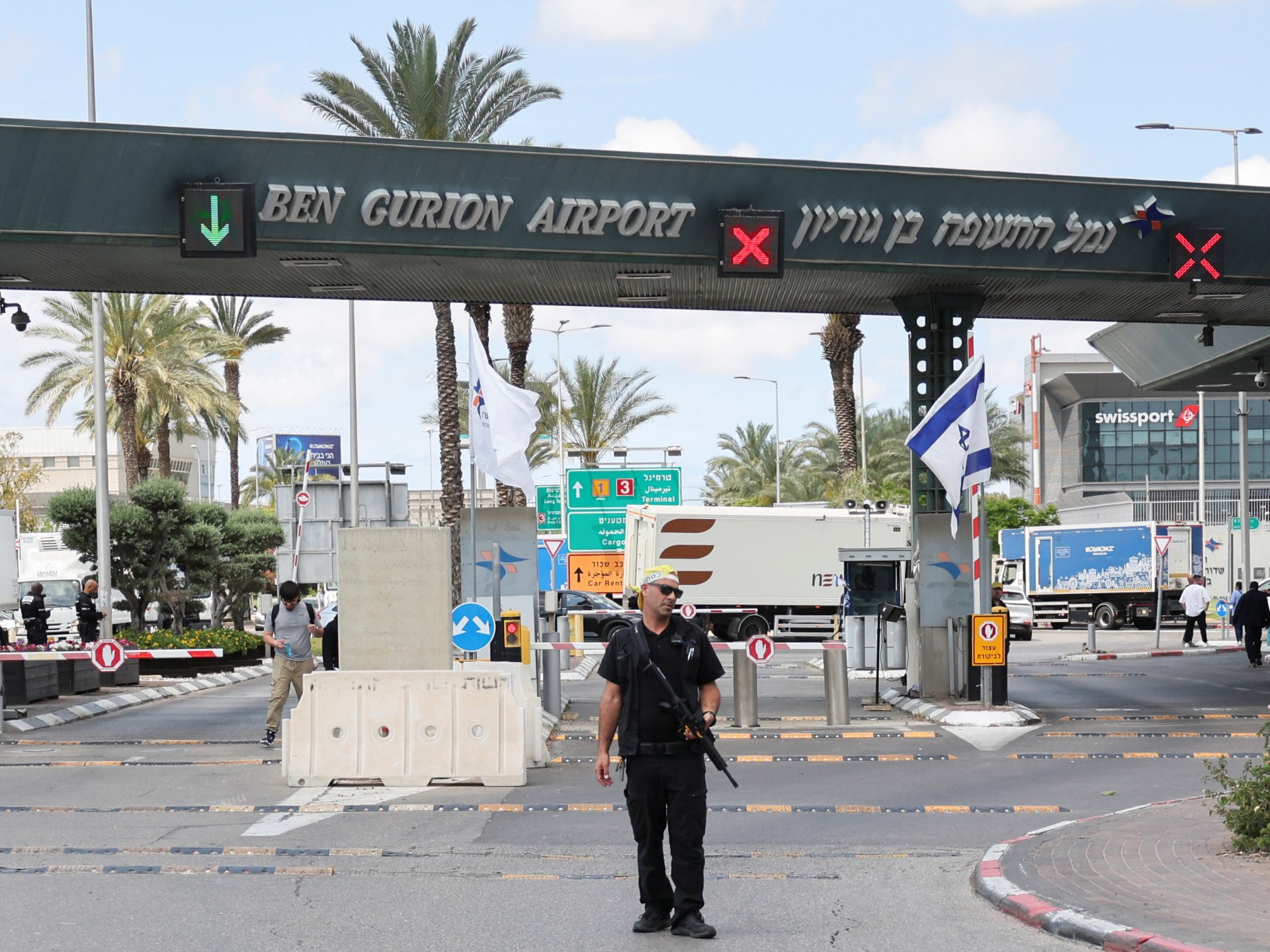
The incident comes days after Oman said it mediated a ceasefire deal between the US and the Houthi group.
Air raid sirens were heard in Israel as a missile was launched towards the territory by Yemen’s Houthis, who say they are retaliating against Israeli sites in solidarity with Palestinians in Gaza.
Israel’s military said it intercepted the projectile on Friday using its air defence systems.
The incident came days after Oman said it mediated a ceasefire deal between the United States and the Houthis, with the Yemeni group saying the agreement did not include Israel.
Houthi rebels fired a “hypersonic ballistic missile” towards Ben Gurion airport near Tel Aviv, while also claiming a drone attack “targeting a vital Israeli enemy target” in the same area, according to the group’s military spokesperson, Yahya Saree.
Israeli media reported that air raid sirens were sounded in several areas across central Israel, with people receiving early warning mobile messages about the missile attack.
Israeli Defence Minister Israel Katz said that Israel would respond forcefully in Yemen and “wherever necessary”, describing the Houthi missiles as “Iranian”.
There were no reports of injuries or damage from the missile attack, according to a military statement.
US President Donald Trump announced on Tuesday that his country would stop bombing Yemen as the Houthis had agreed to stop their attacks on US ships in the Red Sea.
But the Houthis have continued to fire missiles and drones towards Israel, most of which the Israeli military says it has intercepted, without casualties or serious damage occurring.
The Houthis have attacked numerous vessels in the Red Sea linked to Israel and its allies in what they state is an act of solidarity with Palestine.
According to Israeli media, the Houthi group has launched 28 ballistic missiles and dozens of drones at Israel since March 18, when Israel resumed its genocidal war on Gaza.
Israel has been waging a devastating war on the enclave since October 2023, killing more than 50,000 Palestinians, after a Hamas-led attack into southern Israel that month.
Conflict Zones
Who are the armed groups India accuses Pakistan of backing? | Armed Groups News
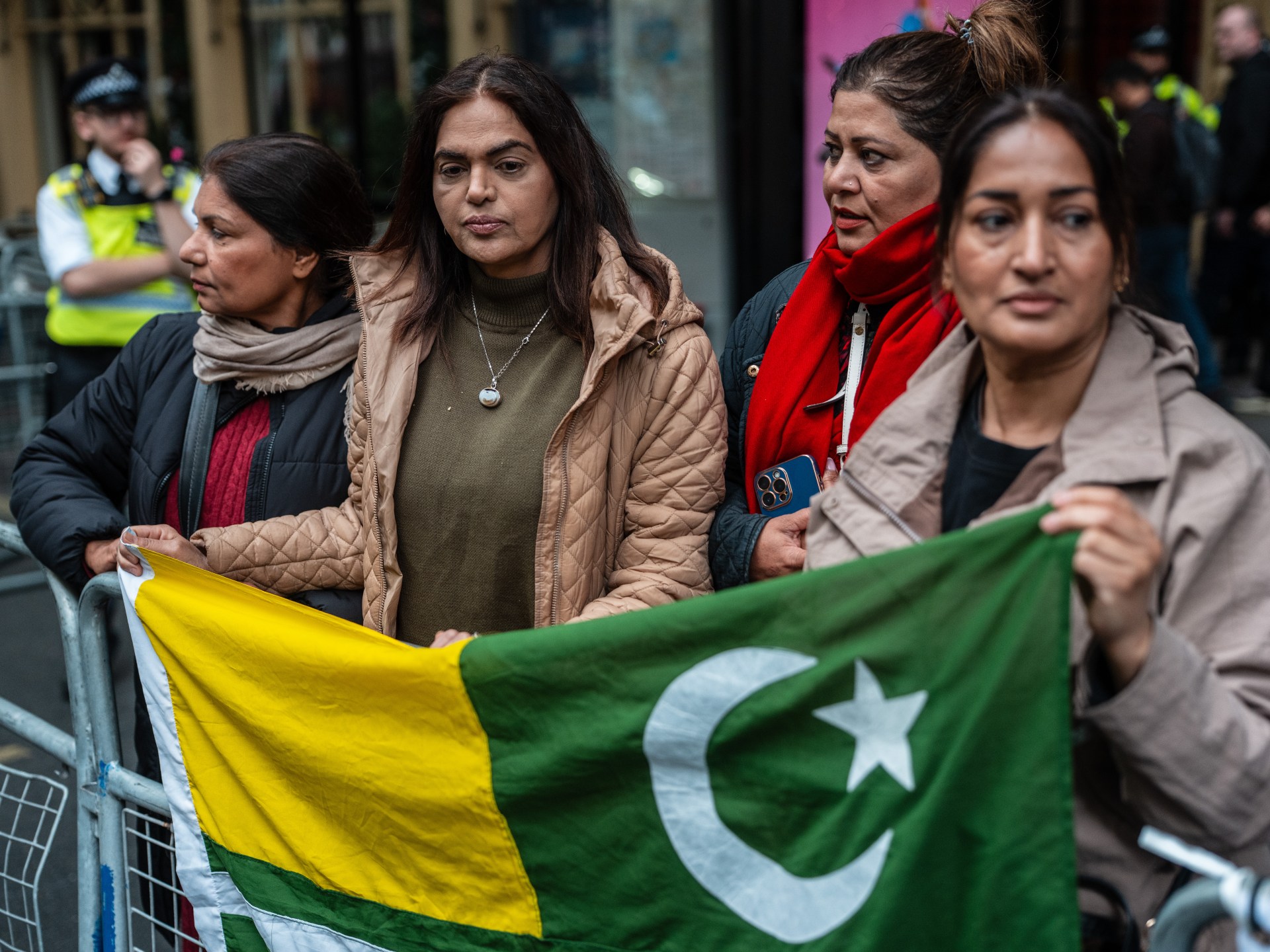
Tensions are higher between India and Pakistan than they have been in decades as the two countries trade blame for drone attacks on each other’s territory over the past few days. At the heart of the dispute is what India claims is Pakistan’s support for armed separatist groups operating in Kashmir, a region disputed between the two countries.
An armed group called The Resistance Front (TRF) claimed responsibility for the Pahalgam attack in Indian-administered Kashmir last month in which 26 people were killed. India alleges that TRF is an offshoot of another Pakistan-based armed group, Lashkar-e-Taiba (LeT) and has blamed Pakistan for supporting such groups.
Pakistan has denied this. It condemned the attack in April and called for an independent investigation.
Here is more about who the armed groups are and the major attacks they’ve claimed or been blamed for.
The TRF emerged in 2019 following the Indian government’s suspension of Article 370 of the Indian Constitution, stripping Indian-administered Kashmir of its semi-autonomous status.
However, the group was not widely known before the Pahalgam attack, which it took responsibility for in April via the Telegram messaging app, on which it said it was opposed to the granting of residency permits to “outsiders”.
Since the repeal of Article 370, non-Kashmiris have been granted residency permits to settle in Indian-administered Kashmir. This has stoked fears that the Indian government is trying to change the demographics of Kashmir, whose population is nearly all Muslim.
Unlike other armed rebel groups in Kashmir, the TRF does not have an Islamic name.
However, the Indian government maintains that it is an offshoot of, or a front for, Lashkar-e-Taiba (LeT), a Pakistan-based armed group whose name means “Army of the Pure”.
In 2020, TRF started claiming responsibility for minor attacks, including some targeted killings. TRF recruits included rebels from different splinter rebel groups. Indian security agents say they have arrested multiple TRF members since then.
According to Indian government records, most armed fighters killed in gunfights in Kashmir were affiliated with the TRF in 2022.
The LeT, which calls for the “liberation” of Indian-administered Kashmir, was founded around 1990 by Hafiz Muhammad Saeed, who is also known as Hafiz Saeed.
In 2008, armed gunmen opened fire on civilians at several sites in Mumbai, India, killing 166 people. Ajmal Kasab, the only attacker captured alive, said the attackers were members of LeT. Saeed denied any involvement in that attack, however. Kasab was executed by India in 2012.
India also blamed Pakistani intelligence agencies for the attack. While Pakistan conceded that the attack may have been partly planned on Pakistani soil, it maintained that its government and intelligence agencies were not involved.
According to the United Nations, LeT was also involved in a 2001 attack on India’s parliament and a 2006 attack on Mumbai commuter trains that killed 189 people.
On May 7, India launched missile attacks on several cities in Pakistan and Pakistan-administered Kashmir. One of these cities was Muridke in the Punjab province. India claims that Muridke was the location of the headquarters of the Jamat-ud-Dawa, a charity organisation that New Delhi insists is a front for the LeT.
Last week, the Indian army claimed it had struck LeT’s Markaz Taiba camp in Muridke. The army also claimed Kasab had been trained at this camp.
Pakistan says LeT has been banned, however. Following an attack on Indian-administered Kashmir’s Pulwama in 2019, Pakistan also reimposed a lapsed ban on Jamat-ud-Dawa. Saeed was arrested in 2019 and is in the custody of the Pakistani government, serving a 31-year prison sentence after being convicted in two “terror financing” cases.
Jaish-e-Muhammad (JeM), or “The Army of Muhammad”, was formed around 2000 by Masood Azhar, who had been released from Indian prison in 1999.
Azhar, who had been arrested on “terrorism” charges, was released in exchange for 155 hostages being held by hijackers of an Indian Airlines plane.
Azhar previously fought under the banner of a group called Harkat-ul-Mujahideen, which calls for Kashmir to be united with Pakistan, and has been linked to al-Qaeda.
According to the UN Security Council, JeM has also had links with al-Qaeda, Osama bin Laden and the Taliban.
Pakistan banned JeM in 2002 after the group, alongside LeT, was blamed for an attack on the Indian parliament in 2001.
The British-born Ahmed Omar Saeed Sheikh, who was convicted of killing US journalist Daniel Pearl in 2002, was also a member of JeM. Pearl was the Wall Street Journal’s South Asia bureau chief. However, a 2011 report released by the Pearl Project at Georgetown University following its own investigation claimed that Pearl had not been murdered by Sheikh. The report instead alleged that Khalid Sheikh Mohammed, the mastermind behind the September 11, 2001 attacks, was responsible. In 2021, a panel of three judges at Pakistan’s Supreme Court ordered Sheikh’s release.
Despite the ban, Indian authorities claim the group continues to operate in Bahawalpur, in Pakistan’s Punjab province. On May 7, the Indian army claimed its strikes had also targeted the headquarters of JeM there.
In 2019, JeM claimed a suicide bomb attack that killed 40 Indian paramilitary soldiers in Pulwama in Indian-administered Kashmir.
Azhar has been arrested by Pakistani authorities twice, but was released and has never been charged. He has since disappeared from the public eye and his current whereabouts are not known.
Hizbul-ul-Mujahideen
Hizbul-ul-Mujahideen (HuM), or “Party of Holy Fighters” was formed in 1989 by Kashmiri separatist leader Muhammad Ahsan Dar.
The group emerged out of the 1988 protests in Kashmir against the Indian government. The group, also called Hizb, has become the largest Indigenous rebel group based in Indian-administered Kashmir.
Rather than calling for independence, HuM calls for the whole of Kashmir to be allowed to accede to Pakistan.
The group has a huge network of fighters in Shopian, Kulgam and Pulwama districts in the south of Indian-administered Kashmir.
In 2016, the killing of popular HuM commander Burhan Wani triggered widespread protests in Indian-administered Kashmir, resulting in a crackdown by Indian security forces.
The following year, the US designated HuM as a “foreign terrorist organisation” and placed sanctions on the group.
HuM leader Riyaz Naikoo spoke to Al Jazeera in 2018. “It is the nature of the occupying Indian state that has compelled us to resort to violent methods of resistance,” he said.
When asked what the group’s demands were, Naikoo said: “Our demand is very simple – freedom. Freedom, for us, means the complete dismantling of India’s illegal occupation of Kashmir and all the structures that support it, be they military or economic.”
He added that the group considers Pakistan an “ideological and moral friend” because “Pakistan is the only country which has consistently supported our cause and raised the concerns of Kashmiri freedom struggle at international forums”.
Conflict Zones
‘Slippery slope’: How will Pakistan strike India as tensions soar? | India-Pakistan Tensions News
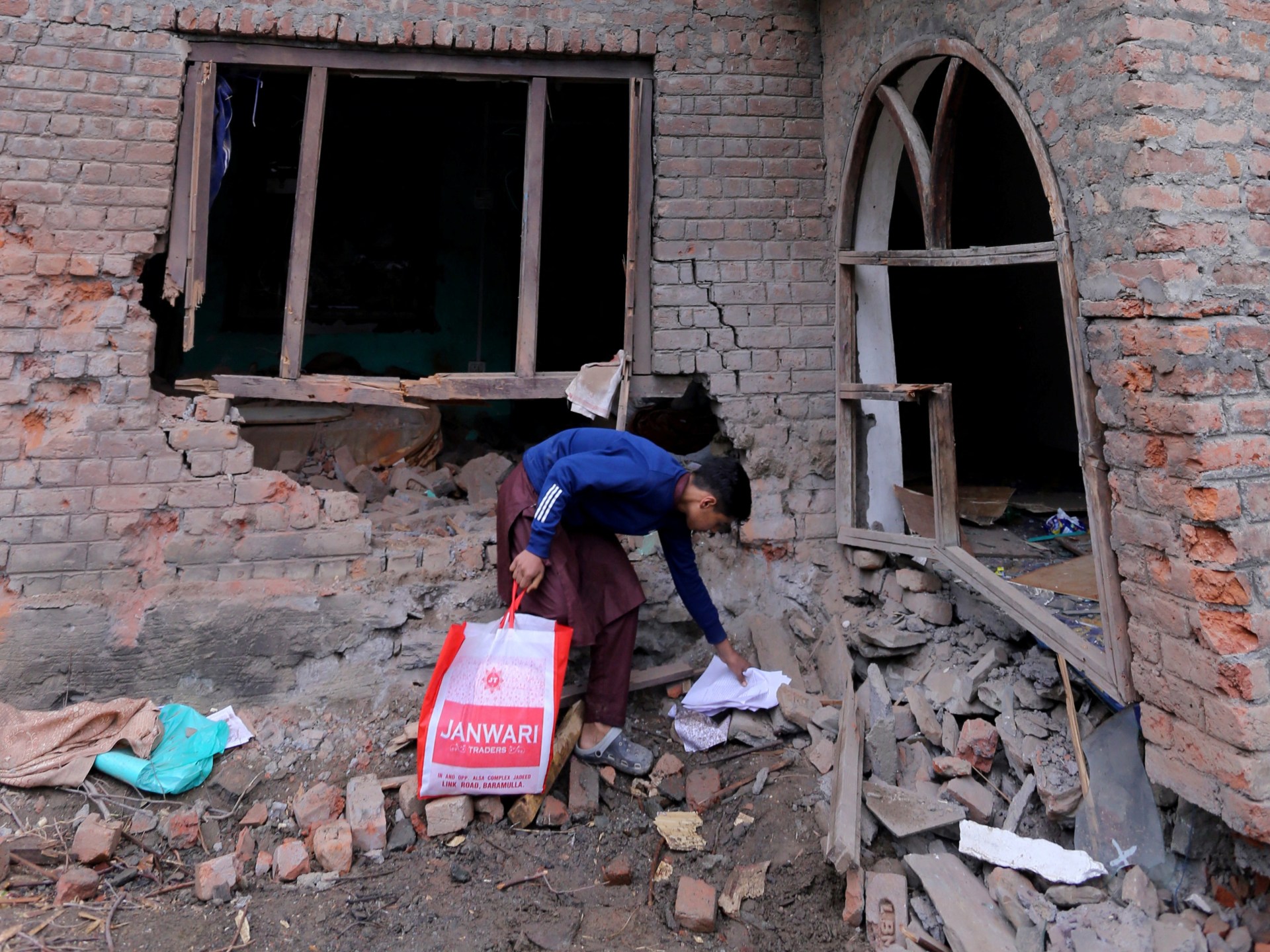
Islamabad, Pakistan – On Wednesday evening, as Pakistan grappled with the aftermath of a wave of missile strikes from India that hit at least six cities, killing 31 people, the country’s military spokesperson took to a microphone with a chilling warning.
“When Pakistan strikes India, it will come at a time and place of its own choosing,” Lieutenant General Ahmed Sharif Chaudhry said in a media briefing. “The whole world will come to know, and its reverberation will be heard everywhere.”
Two days later, India and Pakistan have moved even closer to the brink of war.
On Thursday, May 8, Pakistan accused India of flooding its airspace with kamikaze drones that were brought down over major cities, including Lahore and Karachi. India confirmed the drone assault, but said it was responding to a provocation from Pakistan — missiles and drones launched towards cities and air defence systems in India and Indian-administered Kashmir. Pakistan denied that charge, and subsequent accusations of missile and drone attacks on parts of Indian-administered Kashmir on Thursday night.
With Pakistan denying any missile or drone strikes against India, Chaudhry’s warning of upcoming retribution remains alive, hovering over the 1.6 billion people of South Asia, 17 days after armed gunmen killed 26 male civilians in Pahalgam, Indian-administered Kashmir, triggering the current escalation.
Experts say how Pakistan responds will likely be shaped by its desire to demonstrate that it can hurt India, without pushing the crisis over the edge into a full-blown conflict.
“We are still far away from a war, but we are much closer than we were 24 hours ago,” said Christopher Clary, assistant professor of political science at the University at Albany.

Next target: Military bases?
Clary said that the next “logical escalatory” step for both countries might be to target each other’s military bases.
“We have already seen this with air defence-focused strikes,” Clary told Al Jazeera, referring to the Indian drone attacks that tried to target Pakistani radar systems overnight on May 7-8, and New Delhi’s claims that Pakistan launched missiles and drones towards its military facilities.
“But I fear other strikes are likely in the next 24 hours. I think we are still several days from de-escalation,” Clary said, adding that more deaths are likely.
India and Pakistan have been at loggerheads since gaining independence from British colonial rule in August 1947, especially over the scenic Kashmir Valley in the northwestern subcontinent. Both control parts of it, with China in control of two thin slices. India claims all of Kashmir, while Pakistan claims all of Kashmir except the parts held by China, its ally.
They have fought multiple wars over Kashmir. The last major escalation occurred in February 2019, when India accused Pakistan of supporting armed groups responsible for a suicide bombing that killed 40 Indian soldiers in Pulwama, in Indian-administered Kashmir.
In response, India crossed the border for the first time since the 1971 war, launching air strikes in Balakot, Pakistan’s northwest, claiming to have hit “terrorist infrastructure” and having killed “hundreds of fighters”.
Pakistan countered that the area was a forest and reported no casualties. It responded the next day with its own fighter jets, leading to a dogfight and the downing of an Indian jet. The captured pilot, Abhinandan Varthaman, was later returned to India, easing tensions.
Kamran Bokhari, senior director at the New Lines Institute for Strategy and Policy in Washington, DC, called the current situation “much more dangerous” than in 2019.
India, he said, appeared to be locked into an “escalatory spiral”.
“In case Pakistan makes a move, India will respond and up the ante,” he said.
“This is a new situation for Pakistan. For the military to say that it will respond in a time of its own choosing suggests they want to think it through, to strike in a manner that does not lead to escalation. But how that materialises is a function of capability and constraint.”

‘A deliberate response’
It took India 12 days to respond to the Pulwama killings with the Balakot strike in 2019. In the current conflict, the Indian response took even longer, 15 days, via “Operation Sindoor,” which struck multiple Pakistani cities, including ones in Punjab, close to the Indian border.
Some analysts argue that while Pakistan has so far calibrated its response diplomatically and militarily, the drone strikes on Thursday morning marked a “serious escalation”.
“The military is expected to respond in a manner that is firm and resolute, drawing on both public and political support. The scale of Pakistan’s response will be quite telling,” said Arsla Jawaid, associate director at global consulting firm Control Risks, while speaking to Al Jazeera.
She said Pakistan is likely to opt for precision strikes targeting Indian military assets while avoiding civilian casualties.
“This could issue a decisive response while minimising further escalation. The latter will be a critical calculation in any Pakistani response,” she added.
Sahar Khan, a Washington, DC-based security analyst focused on South Asia, agreed that Pakistan will “definitely” respond.
Khan said India had crossed several “red lines,” including suspending the Indus Waters Treaty after the Pahalgam attack, and launching missile and drone attacks. The Indus Waters Treaty (IWT), mediated by the World Bank and signed in 1960, governs the distribution of Indus River waters, critical for millions across the subcontinent, particularly in Pakistan.
“The question is, what will they [the Pakistani military] target? That will determine the escalation dynamics and the eventual off-ramps,” she told Al Jazeera.
“I think Pakistan will retaliate, showcasing its military capabilities. Its defence systems remain intact, and that is an added incentive to respond,” Khan added.
‘Who blinks first?’
With brinkmanship at its peak and both sides locked in aggressive posturing, the greatest fear remains that even a small miscalculation could lead to a fully fledged war between two nations with more than 150 nuclear weapons each.
Bokhari warned that India’s strikes in Punjab, Pakistan’s most populous and prosperous province, marked a dangerous precedent.
“By attacking Punjab, which was almost unthinkable, India has now made this the new normal. This is a real slippery slope,” he said.
Jawaid concurred, noting that drone strikes on Pakistani urban centres also suggest a shift in red lines.
“That opens the door to a sustained and heightened risk of escalation, which is deeply problematic due to the risk of miscalculation on both sides. We are in a case of who blinks first,” she said.
But Khan believes that there are a few potential off-ramps.
“The first is the international community, such as the US, China, and Russia, urging restraint. The second is for India and Pakistan to show willingness to redefine red lines, like India agreeing to the IWT again and Pakistan agreeing not to strike Indian military targets,” she said.
Jawaid, however, warned that even if India and Pakistan avoid a war, their already deeply strained equation has changed – there’s a new normal that will define it.
“The longer this is sustained, the more challenging it becomes,” she said. “The bilateral relationship is already fraught with heightened tensions, which will continue even if the current conflict settles down, especially due to unresolved issues around natural resources and Kashmir, which remains a flashpoint.”
-

 Middle East2 days ago
Middle East2 days agoWhat does the truce between the Houthis and the US mean for Yemenis? | Houthis
-
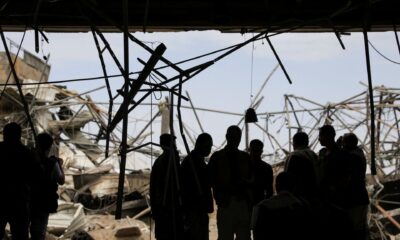
 Middle East2 days ago
Middle East2 days agoThe Take: What does Israel’s escalation with the Houthis mean for Yemen? | Houthis News
-
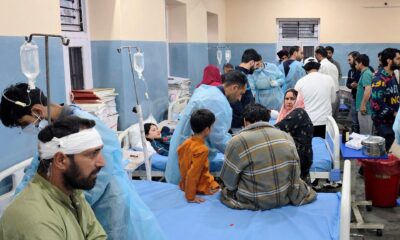
 Conflict Zones2 days ago
Conflict Zones2 days ago‘Don’t want war’: Kashmiri towns caught in deadly India-Pakistan crossfire | India-Pakistan Tensions
-

 Lifestyle1 day ago
Lifestyle1 day agoWorld Video Game Hall of Fame inducts Defender, Tamagotchi, GoldenEye 007 and Quake
-
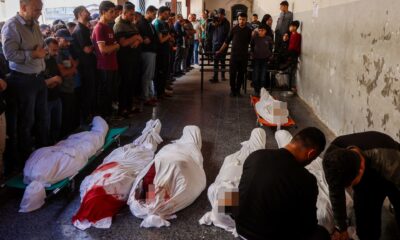
 Middle East1 day ago
Middle East1 day agoUN experts warn of ‘annihilation’ as Gaza deaths mount | Gaza News
-

 Lifestyle1 day ago
Lifestyle1 day ago‘Long Way Home’ has Ewan McGregor and Charley Boorman riding in Europe
-

 Europe1 day ago
Europe1 day agoUK’s King Charles lays wreath to mark 80th anniversary of VE Day
-

 Conflict Zones1 day ago
Conflict Zones1 day agoHave India and Pakistan started a drone war? | Drone Strikes News




